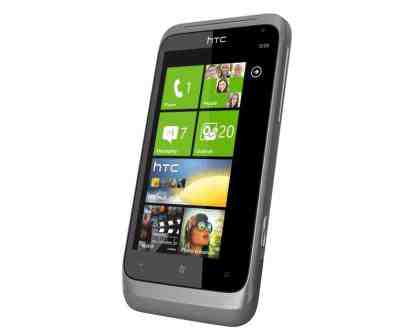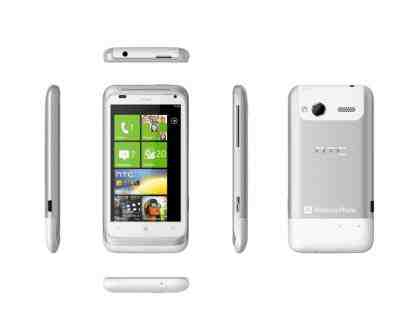The Radar is HTC's mid-range Windows Phone 7.5 (Mango) phone. After a slow start, Windows Phone is maturing, and there are now thousands of apps available in the Marketplace. Compared to the huge flagship HTC Titan , with its 4.7in display, the Radar has a more conservative 3.8in 480x800-pixel S-LCD screen. It's compact and, at 137g, is 3g lighter than its predecessor – 2010’s HTC 7 Trophy .
The HTC Radar, like many of HTC’s recent handsets, is made almost entirely out of a single sheet of aluminium. There are two contrasting coloured soft touch pads on the back of the device, which aid grip and finish the look of the device off nicely.

The display resolution and screen size are exactly the same as the HTC Trophy, as are the general proportions of the handset, but the Radar is a classier device. Where the Trophy was a thoroughly plastic affair, the Radar feels every bit the premium-grade phone, thanks to its metallic aluminium unibody. The phone has three physical keys: a volume rocker, power/unlock button and the camera shutter key, while the Windows Phone buttons for back, home and search are all touch-sensitive.
Again like the Trophy, the Radar has a 1GHz processor and 512MB of RAM. However, the Radar is powered by Qualcomm’s MSM8255 Snapdragon chipset, which has an Adreno 205 processor at its core. This has around four times the performance of the Trophy’s Adreno 200. There’s 8GB of internal storage, of which you only see 6GB, and no support for microSD cards for expansion. The lack of expandable storage isn't HTC's fault, as, like Apple's iOS, Windows Phone doesn’t support external storage, but we would have liked to have seen 16GB inside the phone.
The chipset and processor led to smooth performance, as on all Windows Phone 7 handsets. Scrolling menus and typing is as smooth as it is on the iPhone 4 and multitasking is handled perfectly by the Qualcomm chipset. Multitasking in Mango works like a cross between webOS and iOS. Holding down the back key takes you to a zoomed-out view where running apps are displayed as cards, and you can flick between them to choose the one you want. As on Apple's iOS, apps in the background are frozen, so they don't use processor cycles or battery.
It seems to work, as battery life is another of the Radar's strong points. During testing we managed to eke around a day and a half of moderate usage (browsing, calls, push email, music) from the handset before the battery finally died.

The Radar's 5-megapixel camera has a back-illuminated sensor and f/2.2 lens, which yields impressive results in low-light conditions. Video is captured at 720p, and while colours are strong it has a compressed look, and doesn’t measure up to the impressive camera. On the whole, imaging isn’t the Radar’s strong point, but when compared to some of its contemporaries, such as the HTC Desire S, it’s perfectly adequate.
